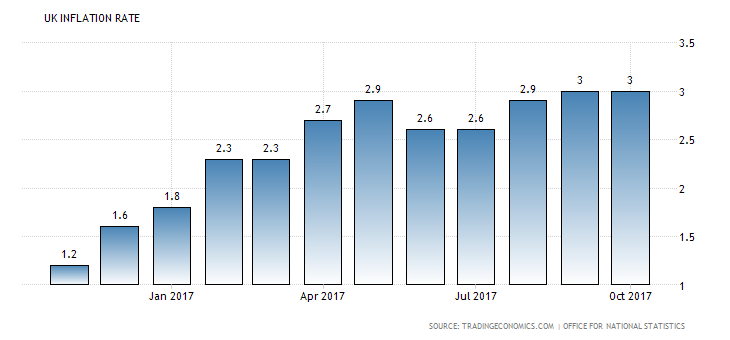Last week’s economic data for the UK was a mixed bag. While inflation remained broadly flat compared to the previous month, wage data indicated worrying signs as employment numbers fell.
This comes amid a SME survey result indicating that businesses were preparing to cut their overhead costs to keep up with the price increases. Brexit led uncertainties continue to remain as the major influencing factor on the economy and the businesses based in the UK.
The UK’s Office for National Statistics released the monthly inflation report and the September jobs report data this week.
UK consumer prices flat in October
The headline inflation rate in the UK remained unchanged at 3.0% marking a five-year high and unchanged from the previous month. Consumer prices stayed flat but recorded the fastest annual change since March 2012.

UK Annual Inflation Rate: 3.0%, October 2017. Source: Tradingeconomics.com
Economists polled were expecting inflation to rise 3.1%. Excluding the food and energy prices, the core inflation rate was also remained steady at 2.7%.
The report comes just a few weeks after the Bank of England voted to hike interest rates by 25 basis points to 0.50%. Growth in input prices at the factory gate slowed to the lowest levels seen since last year’s Brexit vote. Input prices were seen rising 4.6% in October.
This was slower than the 8.1% increase in PPI input from the previous month. The data suggested that following the decline in the pound sterling, the spur in price growth increased after years of weak inflation growth.
UK employment weakens as economy stagnates.
Official data on the UK’s labor market released last week showed that the nation’s employment numbers fell for the first time in nearly two years. The labor market report covering the three month period ending in September showed that the number of people dropping out of work rose significantly.
The data was a contrast compared to the previous months which showed that the UK’s labor market was growing solidly.












Leave A Comment